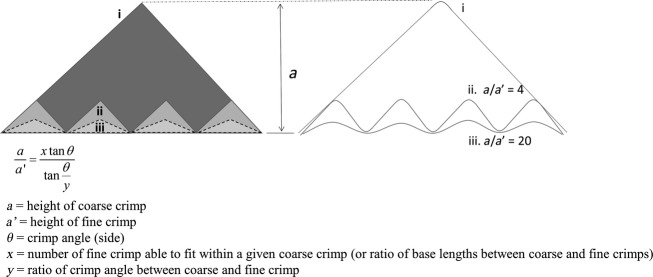Fig 9.

Schematic of coarse crimp (i) and how a fine crimping configuration could either have the same crimp angle as the coarse crimp (ii) or a smaller crimp angle (iii – dotted outline), as is the case in the fine crimps observed in the present study. The effect of different crimp angles was calculated using the equation shown, which was derived from a standard trigonometric interpretation. The ratio of coarse crimp height to fine crimp height, given the same number of fine crimps, is very sensitive to the crimp angle. Using θ = 45˚ and y = 3 (i.e. fine crimp angle 15˚), the ratio a/a’ increases five-fold from when y = 1 (i.e. if fine crimp angle is the same as coarse crimp angle).
